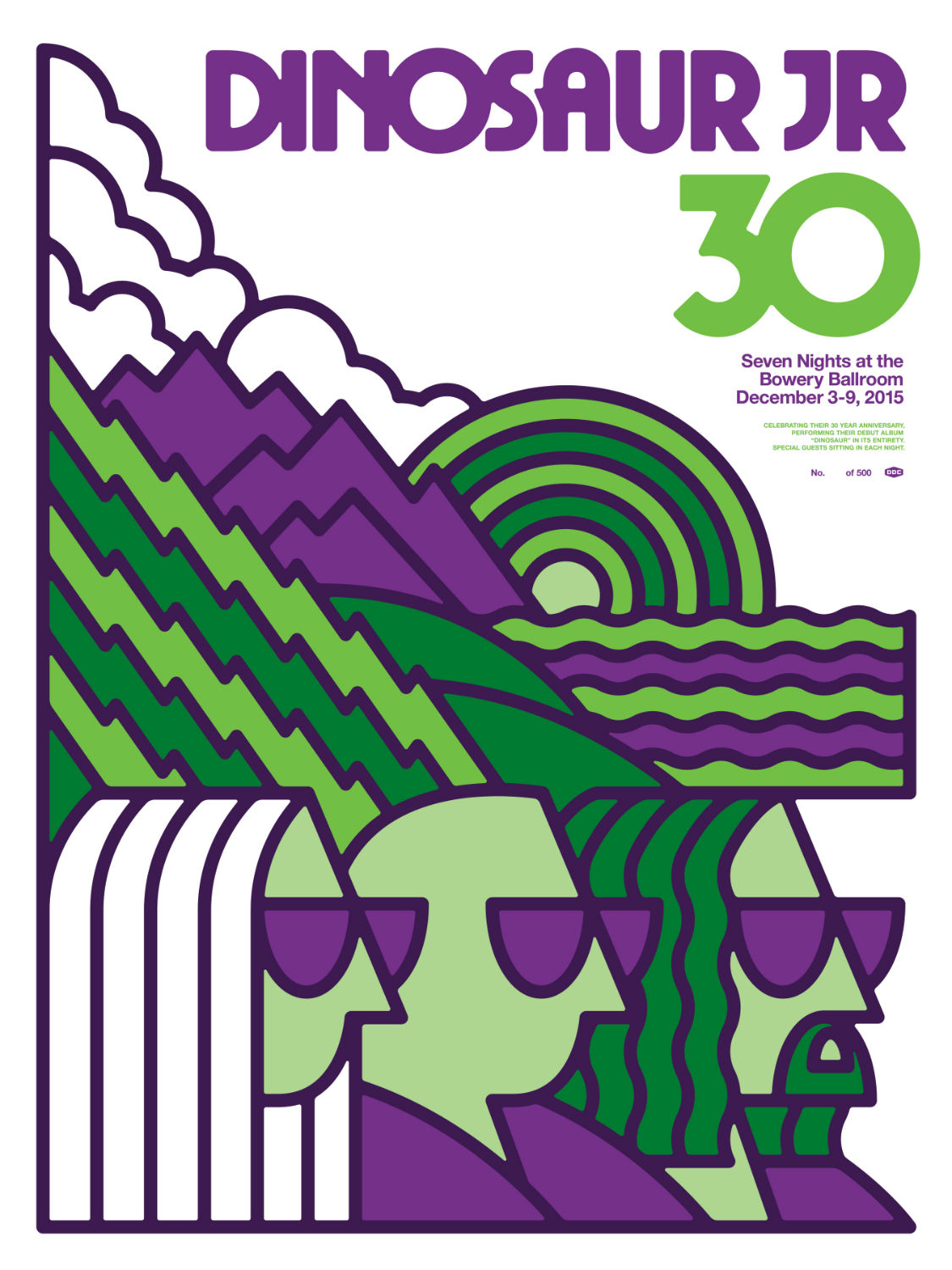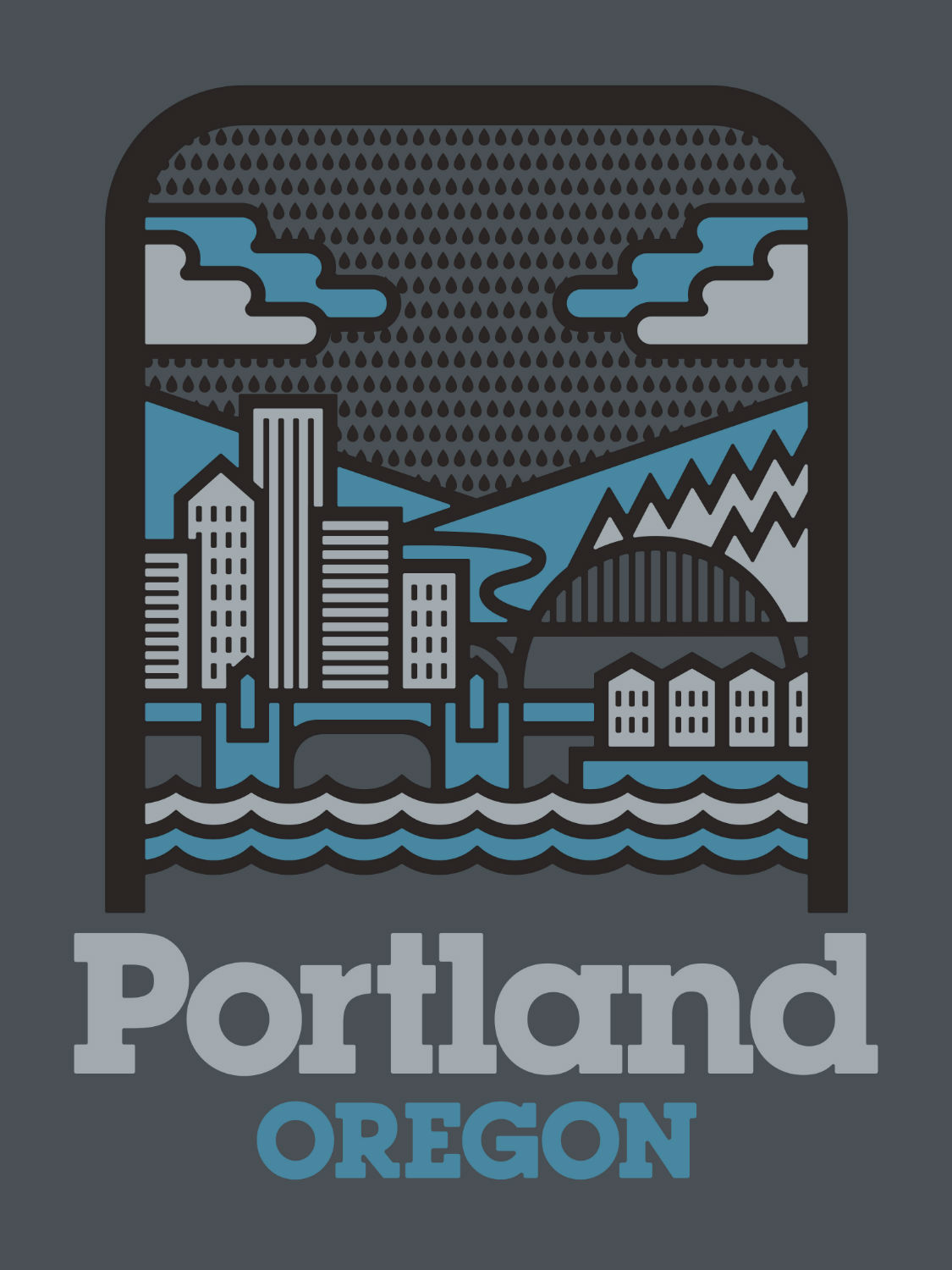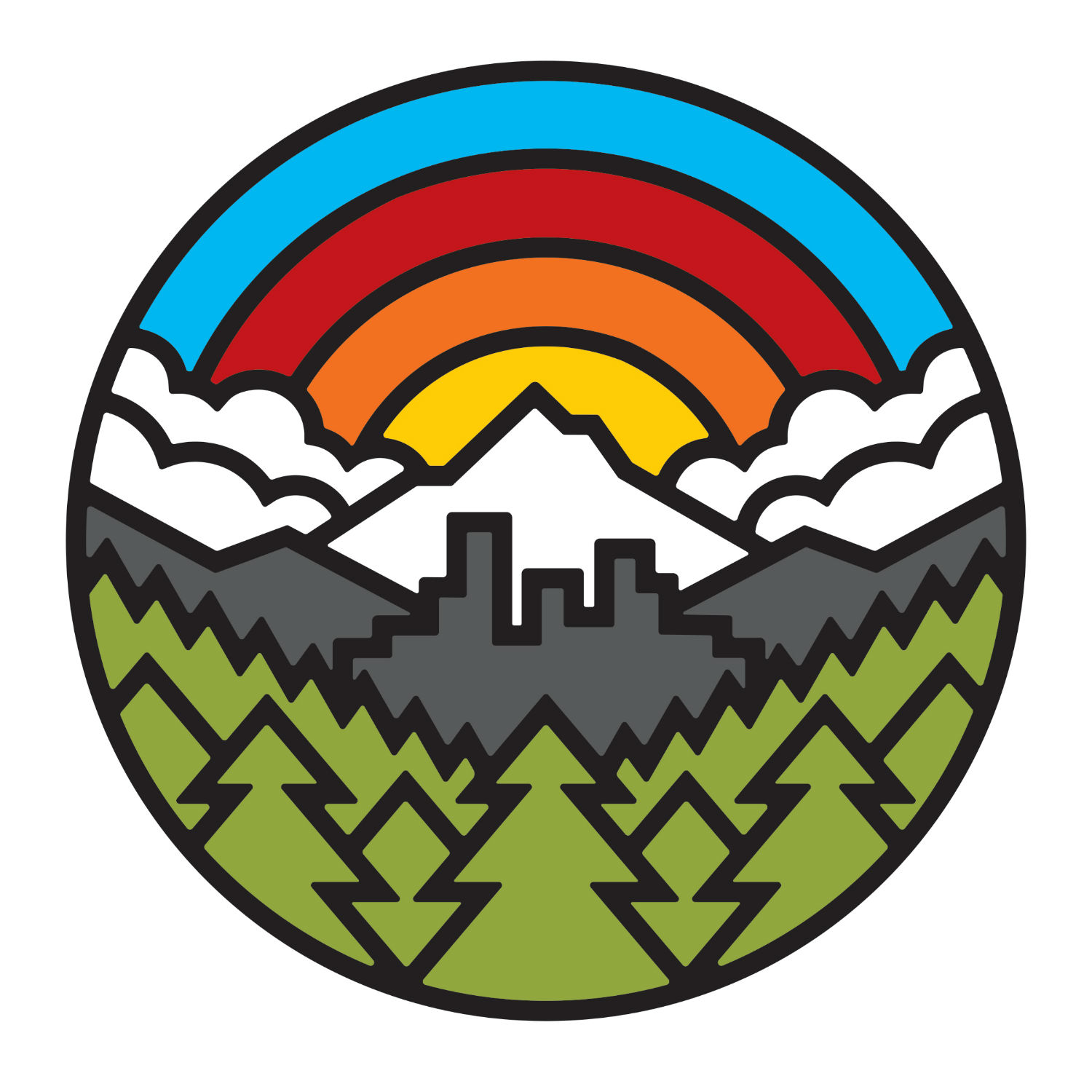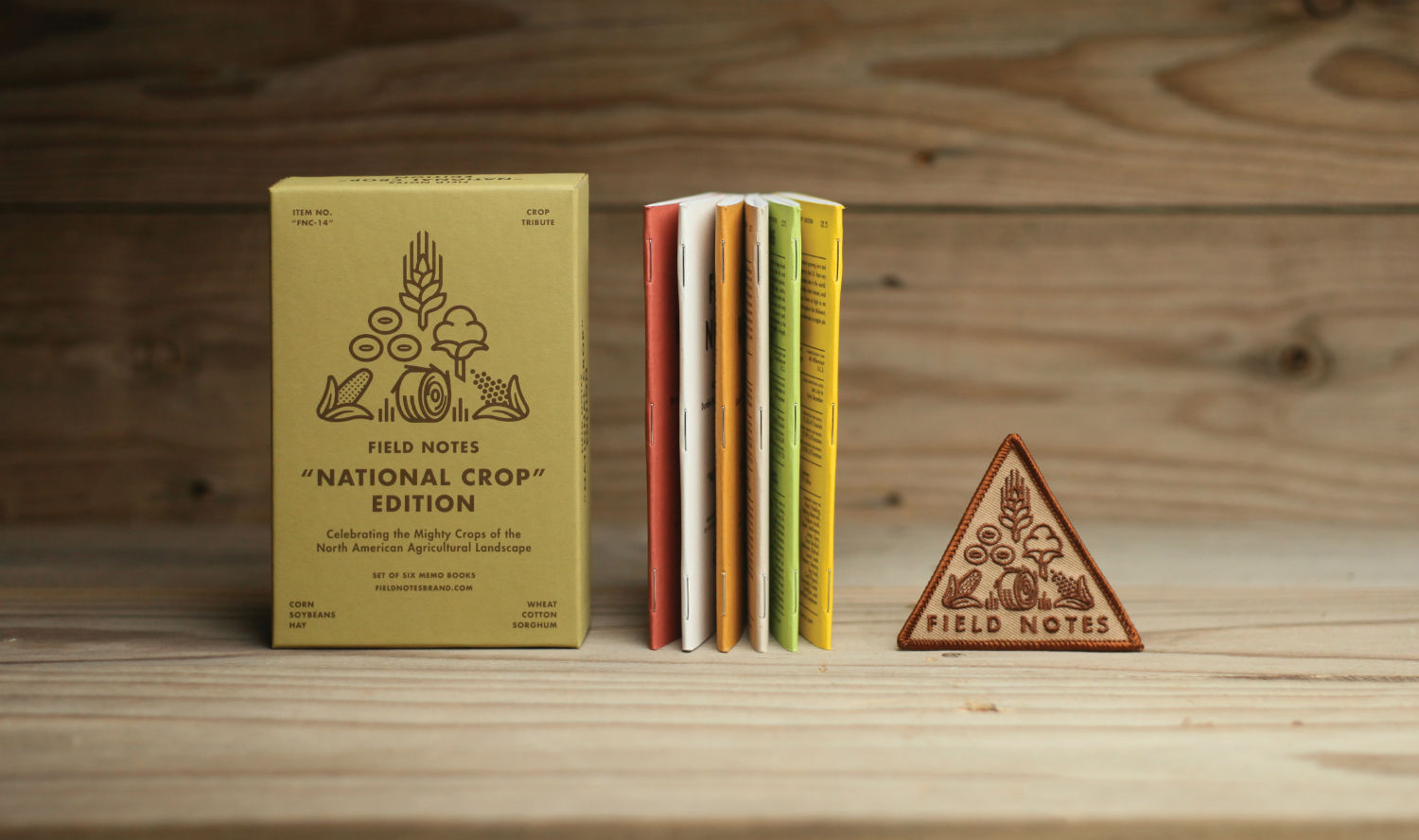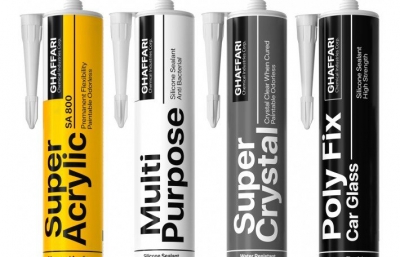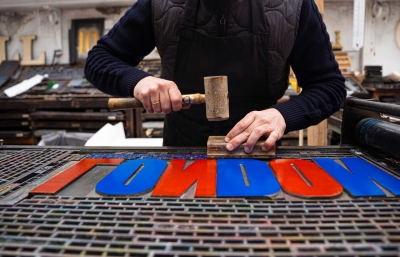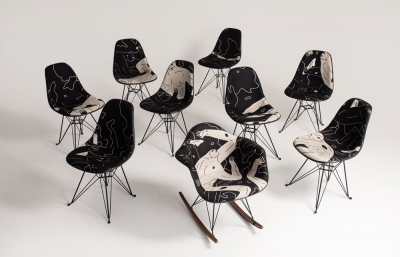A proper logo speaks a universal language. Designer, tradesman, and self-proclaimed collector-of-stuff, Aaron Draplin has made a career solving puzzles of visual communication and promoting fundamental principles of graphic design over convoluted bells and whistles. His work is bold, reflecting a respect for refinement and certainty.
Portrait by Michael Poehlman
In recent years, Draplin’s accolades have afforded him the opportunity to tour the country speaking to young designers, sharing tricks and tips, and championing unsung heroes of the branding world. We recently spoke about growing up skateboarding, pushing letters around on paper, and finding a good place to take notes.
Read the full feature in the November 2016 issue of Juxtapoz Magazine, available here.
Aesop Rock: I wanted to talk about compiling the work for your new book, Pretty Much Everything.
Aaron Draplin: When you get that call, it’s kinda scary. I called John Gall right back and was like, “Should I do this?” In my travels, I’ve been lucky to meet a lot of people who are gunning for a book. They're preparing for it and expect it. Which is kind of weird. I asked John, point blank, “Do you think I'm ready?” And when he said, “We’re calling it a mid-career survey,” you're kind of like, okay, that sounds doable. To me, it's like you're at the end of your career or rope and then they make a book, and hopefully, people liked the work along the way, and you get to celebrate all this shit. I was just nervous. John coaxed me into it in his own mellow way. He said, “People are asking, and I've been watching you, and you’ve done so much work, and it’ll be great. Let's do it.” And that's all it took. But that same, cynical approach to all of my work almost could have tanked the whole thing because, you know, some people will never make a book and still make the coolest shit and be totally okay with having it hidden away. You know what I mean?

How far back did you go? What kind of emotions get stirred up when digging through the archives?
I got teary-eyed a bunch of times! Getting this thing going, I simply gave them a laundry list: What about this? What about that? And before you know it, I went all the way back to being born and what things influenced me as a kid. How do you distill all those years into a single spread? It was more powerful for me to show how I was emulating Jim Phillips then to show you a bunch of wonky shit. That’s how I got my legs, by riffing on the the masters I looked up to. That’s great for learning, but you quickly realize you have to figure out how to make your own stuff. The next thing you see are my own sketches, drawings and junk drawer contents. I don't know if you grew up skateboarding, but there was this little packaging card from Grind King, which were a certain kind of truck hardware back in the day—it was just a little, tiny piece of paper I saved. I had them on my deck, and it was important to me to show that this is the kind of junk I was kicking around in 1988 and 1989. Or how I’d make my own little Tech Deck fingerboards and cheat sheets. I loved showing that bullshit in the book. It's just really a way to say, "If any kid's interested, this is what my world looked liked when I was 16.”
And then you start working your way through your life, page-by-page in the book, showing when I went out West, where you see me only allowed to do analog stuff because I didn't have any money. I was looking to the Coops and Koziks—my heroes from the rock poster world. I couldn't afford screen printing, much less knew what it was, but I could draw. Then, getting a computer when I was in Alaska, that’s when everything changed. To go through all this old stuff again, it was an intense, fun process. And I’m finally organized!
I’ve kept journals since I was thirteen. Making the books, I got to go and reread a bunch of that painful stuff. That changed when I was about 23 or 24 because I started blogging. Writing shit down wasn't necessarily for someone to read, it was just for keeping track of shit, you know? To go back and look at those things and just go, “Oh... my... God! It’s all here!” You know what I was concerned about when I was 14? It was sketching out how I was going to do the grip tape art on my Jeff Grosso deck! Did anyone even write that down thirty years ago? So it's been really cool to go back, crack that big egg of your past and just let it drip all over everything now. I’m so thankful I kept it all and, of course, it informed how I work now. The biggest takeaway from going back and looking at the time when I was a kid was that I am so fucking thankful for skateboarding. And snowboarding. And punk rock. And counterculture artists. And let's just say, for “thinking for yourself.” That stuff opened all the doors to weirdo culture, to the cool shit.
That was the first time I noticed that a cool logo or board graphic could actually have an effect on me.
Right. It was the culture of... like, your chest becomes this weird little billboard! And, for me, in a conservative high school, it was daring to be able to say, "Fuck you. I like the Dead Kennedys." That was different than wearing, I don't know, what was cool then? I don't even remember what was cool in 1990? Swatch T-shirts? Rugby shirts and shit? I remember the shit worn by my scumbag buddies; one guy had the Crass T-shirt, one guy had Santa Cruz, and I had a Butthole Surfers T-shirt. These were statements. What I loved so much was that by supporting some crusty little skateboard brand, it was like they were us, and we knew it, which seemed so big because we were in Michigan, in the middle of nowhere. But it was ours. The jocks and the turds with cool trucks and the good looks and stuff, they had none of that shit. They had footballs and Bud Light. We had art, freedom and expression, and it wasn't about who was the fastest and the coolest and the bestest—it was about fucking hanging with your buddies and finding and inventing our own version of the world.
I feel like a lot of young people are keen on learning how to draw and express themselves through artwork, but for some reason, it might be a more difficult task to get somebody excited about logos and things of that nature. It might even be tough for some of the younger generation to grasp that there's actually an art to it, not just some mathematical equation used to sell things. I'm wondering if you can remember what is was that showed you there was an entire world to dive into within the realm of arranging letters and such.
It was right out of high school. I mean, it really was fear of failure that got me going. Where I'm from in Northern Michigan, it's economically rough. It’s always been rough. You don't know that you don't have anything until you start to meet kids from California who are decked out with the latest bullshit and use cool words. We knew we had to escape. I’ve had a job since I was 13 years old, and that's just part of being a Midwesterner—my high school pizza job!
When I was starting, people would talk about graphic design like it was something almost... soulless, like you were compromising something. I thought that was bullshit. To me, it was like, I get to be artistic make a living? Done. Done, done, done. It was pragmatic, and when you get into it, just a week in, you realize it’s just architecture. You're solving problems and pushing things around on the page. You have to plan, think, and communicate, and there was something about putting these pieces together on a screen or drawing these things up that really grabbed me. I just loved the whole process. I’ve always been the kind of kid who loved to make his own stuff. My dad was a woodworker and my mom made beautiful woven baskets, so we always had projects around the house. We were raised around the idea of taking matters into your own hands. And as soon as I could, I did that with graphic design.
When it comes to the process of getting a client and creating a logo for a company, has it become a bit of a routine yet? Or does each one feel like a totally different thing?
Sometimes, sure. But that’s such a cynical thing to admit. The answer I am so lucky to give is always this: making logos is pretty damn cool. I haven't been making logos in the last seven months. In November of last year, I was finishing up a couple projects, and had to sort of cut it off. I've been working for years, but with the book coming, I said, “Fuck it, in 2016, I'm just going to focus on the book, traveling, promoting and enjoying the whole process, and doing a little bit of work for bands and buddies.” And on January 5th, I got a fuckin’ call from the managers of Metallica! Of course, I said, “I will fucking take the job not matter what!” It was for a logo for their fan club. The day they called me, I was 15 years old again, so excited. That’s one of my favorite bands of all time. I started sketching right away. I started thinking. I looked at references. And here’s the biggest metal band of all time, and I’m using the same tricks I've taught myself. I just love the process. I love making this shit. You sketch, you have meetings, you talk, you listen, you look at what they want to be.
For me it's like a funnel, and you plop a bunch of stuff into it, and one refined thing pops out. I sketch a bunch of stuff that comes to mind, or feels right, or is a reaction to what they shouldn't do, or didn't do, or might wanna do. Then things start to feel like, “Ah, that could work on its own in a little Twitter avatar, or that would be great as an embroidery, or awesome on a T-shirt.” I would never show a client anything that I didn't think had legs, and I would never show anything and say, "That's fucking ready to go, like now!" I hand it to them and I say, “Hey, we're working together here. This is gonna twist and turn, and I just showed you 27 things.” What if you like number 2 and 17? Let's fucking Frankenstein ’em together. See, this is the thing that designers love to complain about. That same old lament of, “Oh my god, they took our work and they wanna change it!” Well, it's like, who the fuck taught that person that you're even allowed to have that sense of entitlement? Yes, we’re human, and we wanna complain about things, blah, blah, blah. But who is paying the fucking paycheck? They are. So that means you need to deliver. This shit is a trade.
Are there ever times where you find yourself at a complete impasse with a client?
Yes and no. Let's just say this much: It's like, first of all, I'm real clear with clients. This is yours and if you want me to go right, I will go right, and in the worst case, I'll sort of let them hang themselves. It depends. There's different categories. If it's my asshole buddy, I can tell him, “I’m not even gonna show you the other shit. This is the best one.” That's different when there's 20 grand on the line. With two hundred bucks, it's different. When it's a paying client and they're hiring you, I'm really clear to say, "I'm gonna show you a lot of stuff. You're gonna guide me, and I'm gonna guide you. I will put my best foot forward and tell you, ‘This is the one that feels pretty good,'" but there's all these funny little things that can go wrong. It's psychology. If you tell them “go with A”, they're gonna say they really like B. So you roll with that. They are the ones who have to wake up with the thing! It’s my job to keep them on course, and show them the successful things they have to go with.
Let's say you're sought out by someone who has a lot of money but whose moral compass may not align with yours 100%. Would you ever say no, or can you separate it all in your mind?
I'll tell you right now, it's a source of pride and a source, even, of dumbassery on my part. I said no to ten grand from Camel cigarettes one time! My grandma died from cigs. My buddies can't stop. I tried them when I was 12 and my fingertips smelled like a fucking ashtray. Scared me to death. I said no then, when they called to recruit me. I'm proud of that. I've said no to sports energy drinks. As a man of size who loves a cold Coke, I know I clearly have to kick that shit. Hell, I had one this morning. It was delicious!
Do you have any favorite letters or ones that you hate? When someone comes to you and says, this is my company’s name and it has three O’s...
The quick answer would be this: anything symmetrical is totally cool, like U, M, A or V. Geometry is on your side right away. When you look back, say 50 years, some of the greatest logos? They worked in a circle. They worked in a square. They worked in a triangle. They were symmetrical. If they weren't symmetrical, they still looked like these really beautiful, pleasing shapes, which would be housed in circles, squares and triangles. When I have to do something with a J or a K, yes, it's a little trickier, as you're working with the negative space. But here's the thing: there's also opportunities to tuck something in there. So there's a lot of ways to look at this stuff. N is tough because you have the asymmetrical quality, but there are ways to do it. The first thing I would look at with an N is to say, “Okay, how does that shit work in a square?” And that's what will start to guide you. An L can be tricky because they’ve got all that big, open space. If someone comes in and says, “We’re starting a company and we want a cool M,” I’ll know exactly how to attack that fucker. The tough part is when someone comes to you with a name that is an ugly-ass set of letters, and you're just like, “Oof!” But, that's my job. There’s so much around me that you can look at and say, “Fuck, that person built that logo really, really beautifully.” I collect that shit. You don’t have to be a big branding agency to make good logos. You can just be a good puzzle solver. And there's something really cool about that. I freak out about that shit and I take notes and learn from my favorite designers’ decisions and moves.

Is Field Notes the one product you've done that has completely taken on a life of its own, and are you always searching for the next thing that could match that?
Yes, yes, of course. Field Notes has blown up so big! But that’s enough! This whole thing started because I couldn’t find simple memo books that I could stomach. So I made my own. And when you make it from that perspective, there’s no plan. Then you give it to a buddy and he says, “We’ve got something here!” Then what? That buddy was Jim Coudal. And he understood how to take it to the next level instantly and organically. My favorite part of Field Notes? They're $9.95. Hell, if you park your car in the city, it's 20 bucks. When I pay for a cab back from the airport, it's fucking 22 bucks. Field notes are $9.95. They don’t break the bank. We’re told we could sell them for more. We’re in these stores that sell jeans for $500, [sighs] both here in Portland and in New York City, and everywhere else. But we’re also in stores where people are just starting out. It might be an art store, record store, book store... and our Field Notes are still $9.95. They can make a profit on them, and we make our little profit. And the kid who bought them—I'm a bit biased, of course—got a really nice piece of design, and a really fun product. The best part? It works! And it's made in America. It just wins on every single level. And it's ours, man. It's ours. Not someone smarter than us. Well, Jim is way smarter than me!
----
Originally published in the November 2016 issue of Juxtapoz Magazine, on newsstands worldwide and in our web shop.









